This is the thirteenth in a series of posts about the Nikon 70-200 mm f/2.8 S lens for Nikon Z cameras. The series starts here.
In two previous posts, I did some quantitative comparisons of the Nikon 70-200 mm f/2.8 E and S lenses at 200 mm. Now I’ll do the same at 70 mm.
Particulars:
- 12 meters target distance
- ISO 64
- f/2.8
- Manual exposure, ETTR in live histogram.
- Subject in the center and the upper right corner.
- AF-S pinpoint focusing.
- Six shots at each setting, focusing anew for each shot, picking the best using the Imatest sharpness ranking utility. This method calibrates out focus curvature.
- Developed in Lightroom
- Sharpening set to zero.
- White balance set to gray background on Siemens Star target
- Adobe Color Profile
- Minor exposure adjustments, with same adjustment applied to all images from both lenses, so corner darkening is unaffected.
- Chromatic aberration correction turned off.
- Everything else at default settings
The scene, with the target centered using the S lens wide open.
A close up of the target region:
I’ll show you a flock of charts, but they all add up to one thing: the two lenses are excellent wide open, and there’s not much to choose between them.
Let’s look at the slanted edge in the center shots:
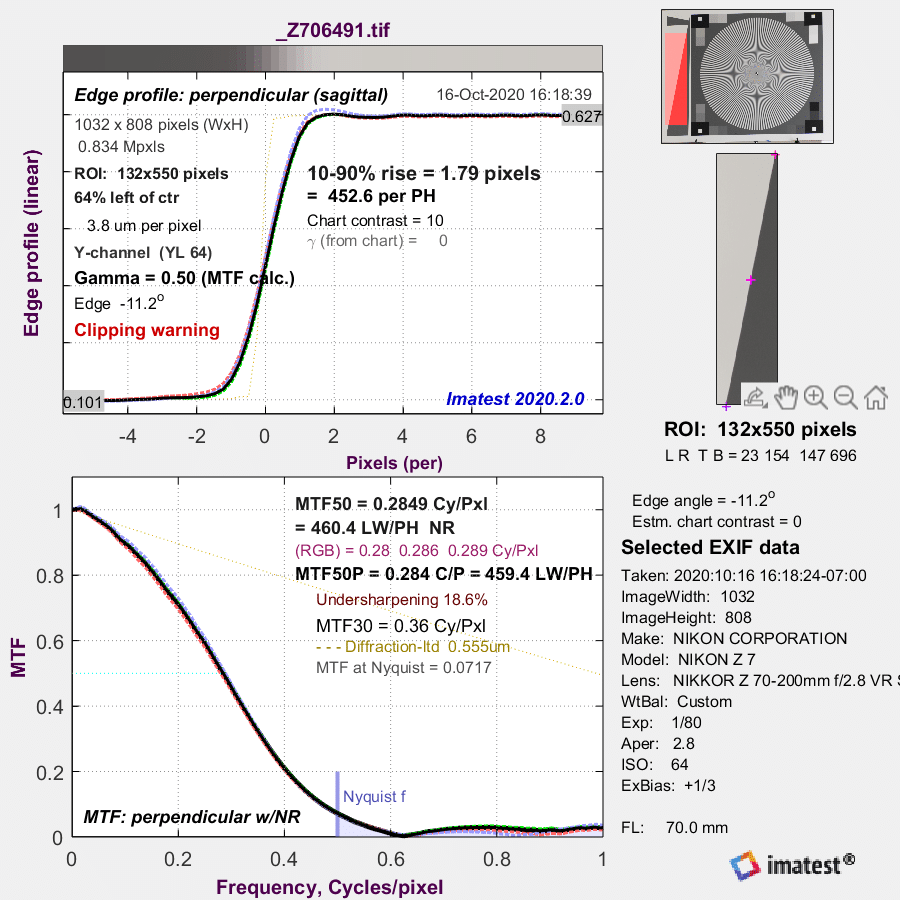
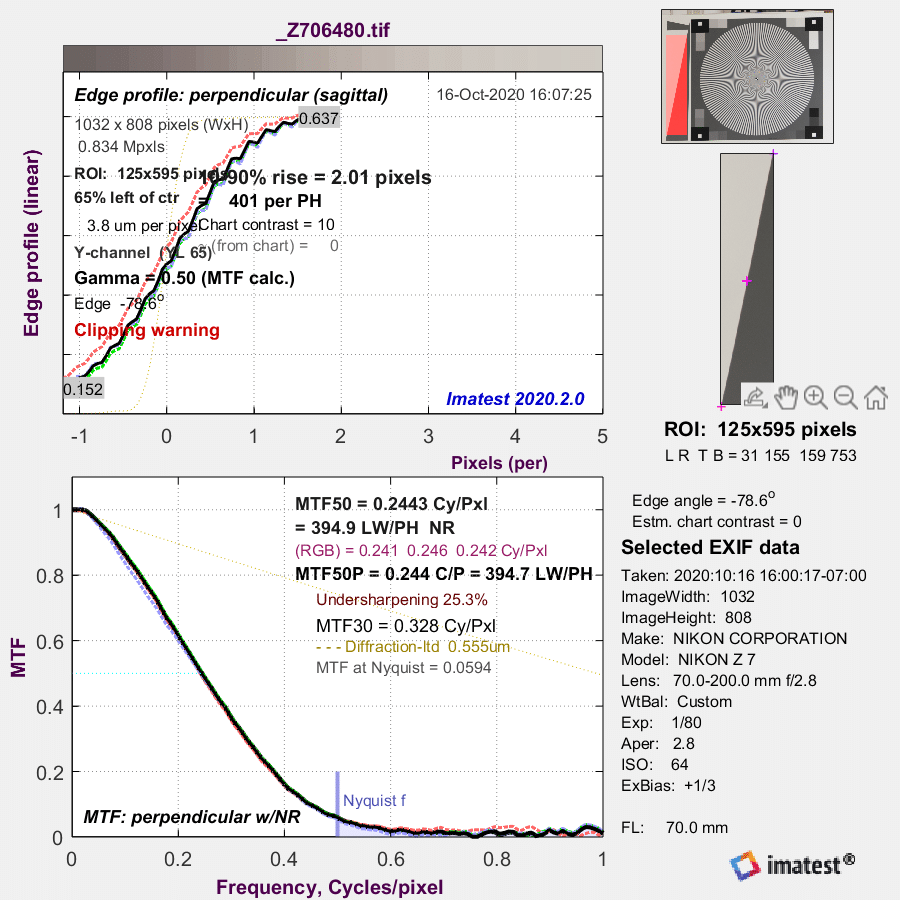
The S lens is slightly sharper.
In the corner:
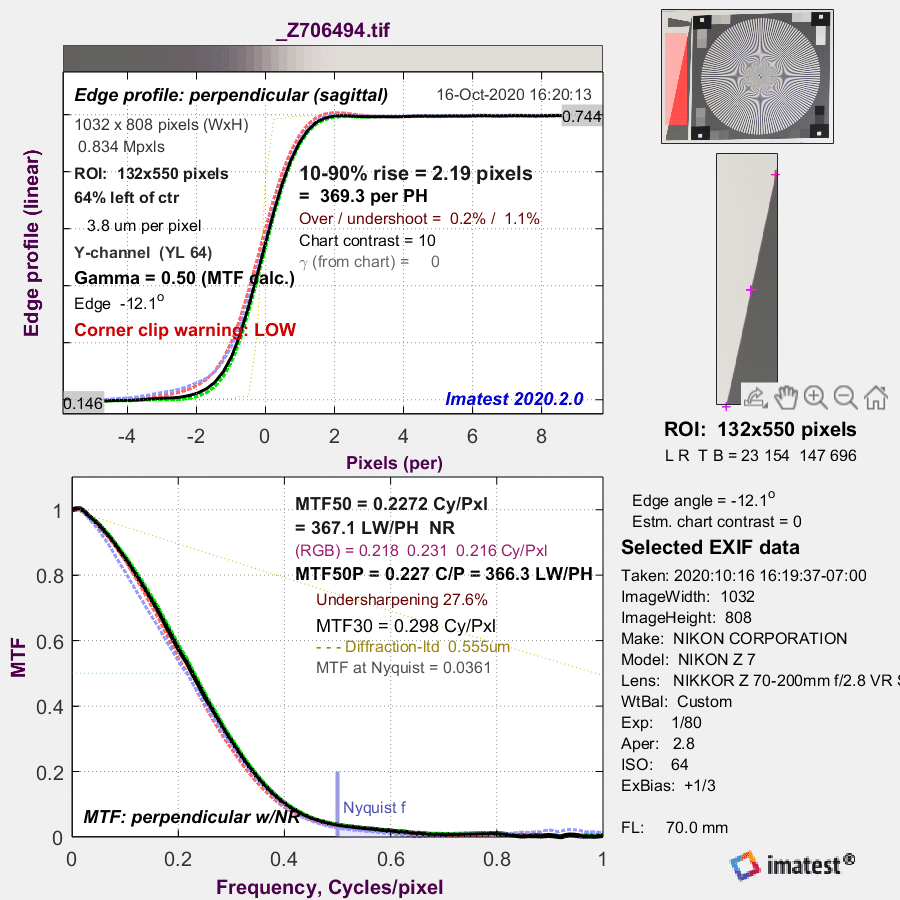
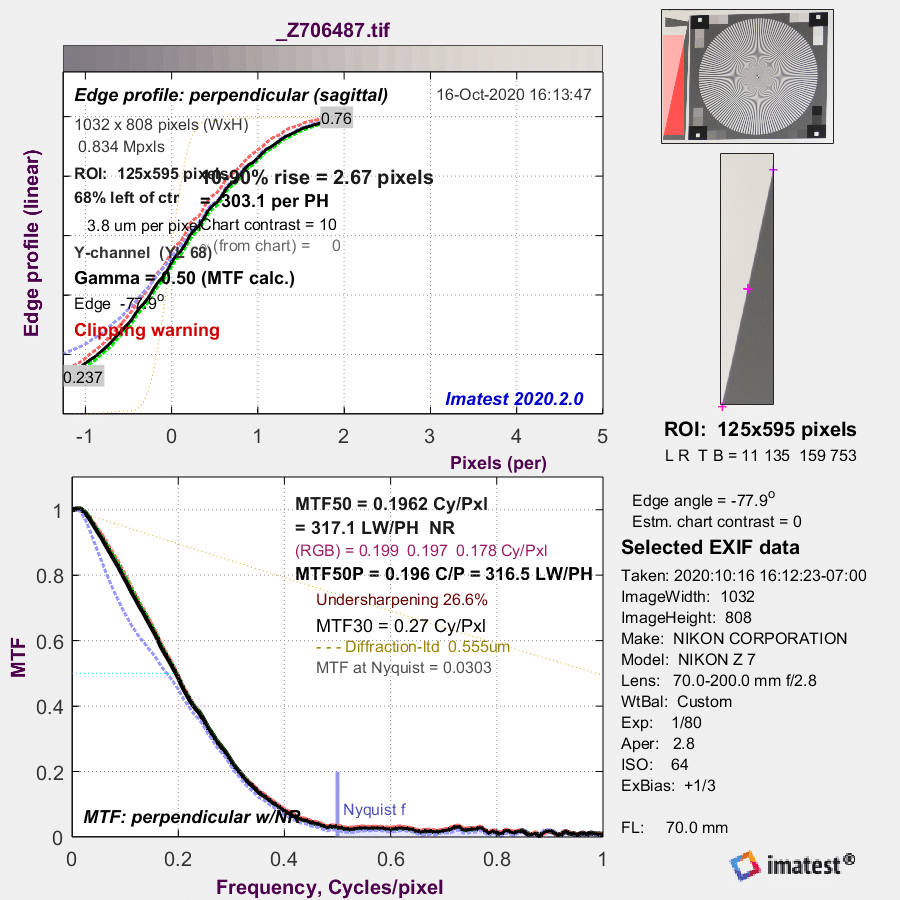
The S lens is sharper.
Looking at the Siemens Star computed MTFs at various angles:
Center:
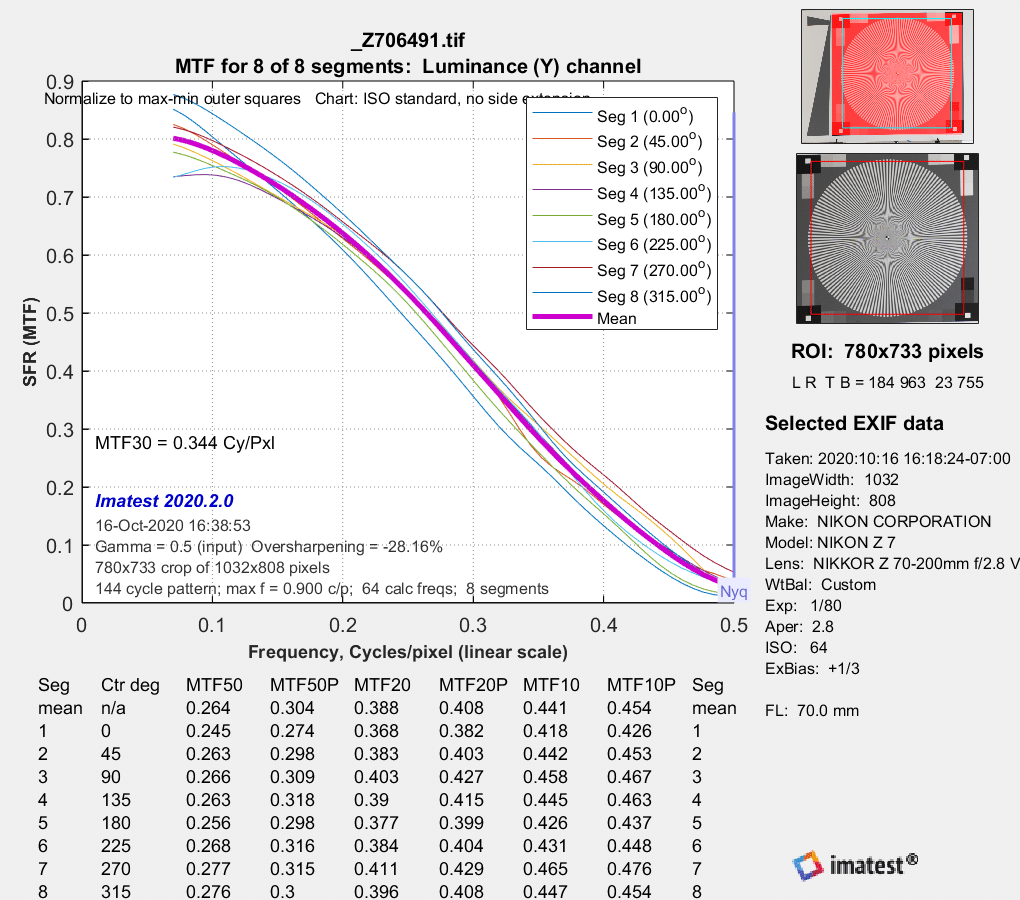
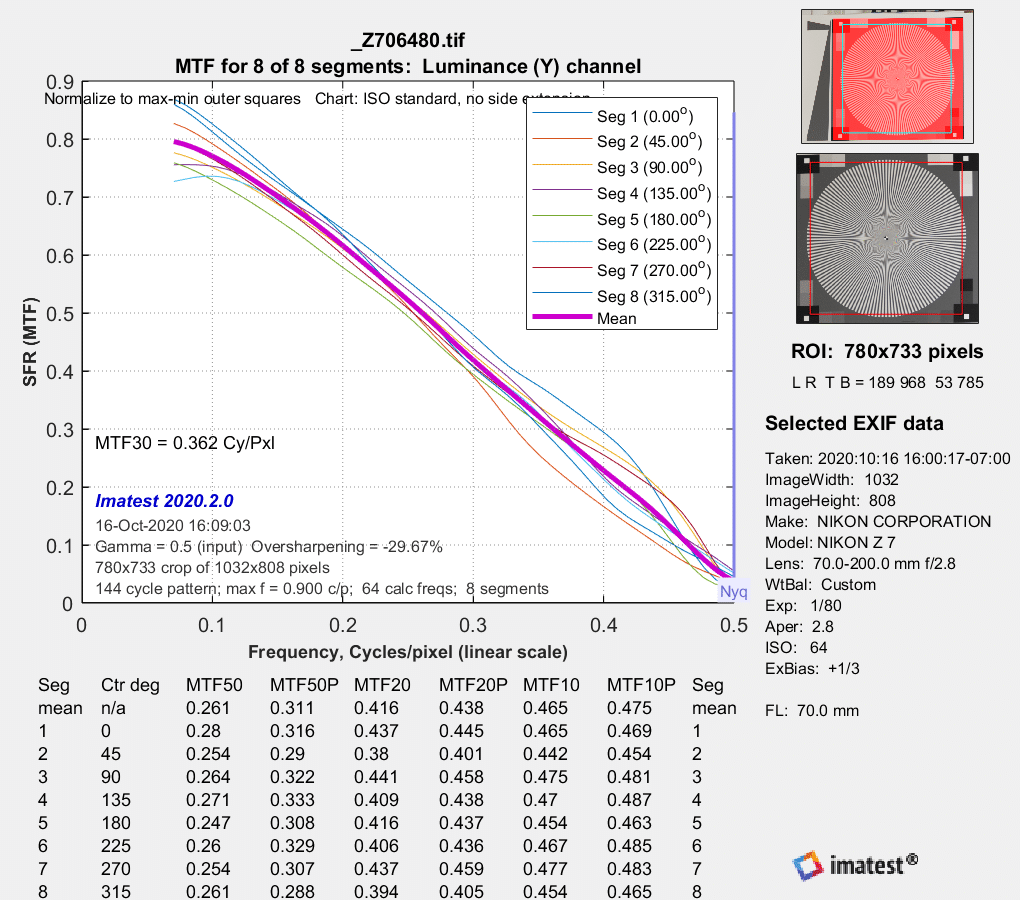
A virtual tie, broken only in the third decimal place of the mean MTF50.
In the corner:
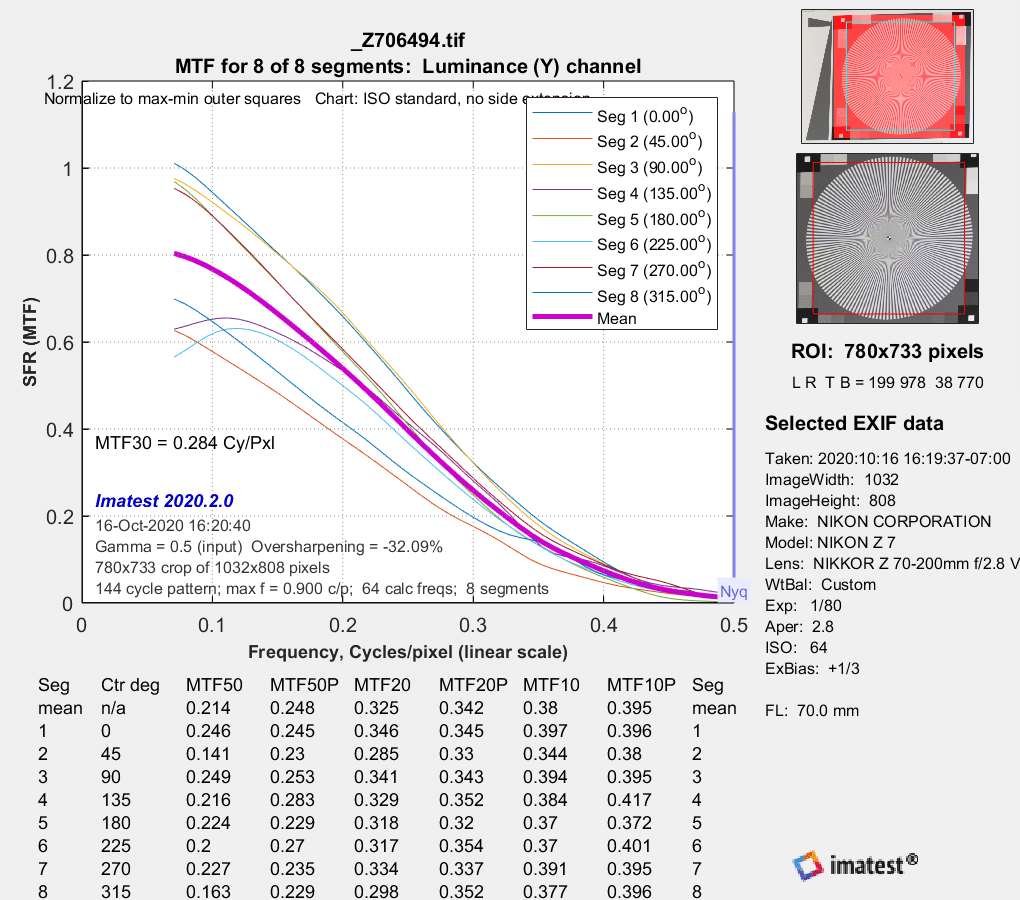
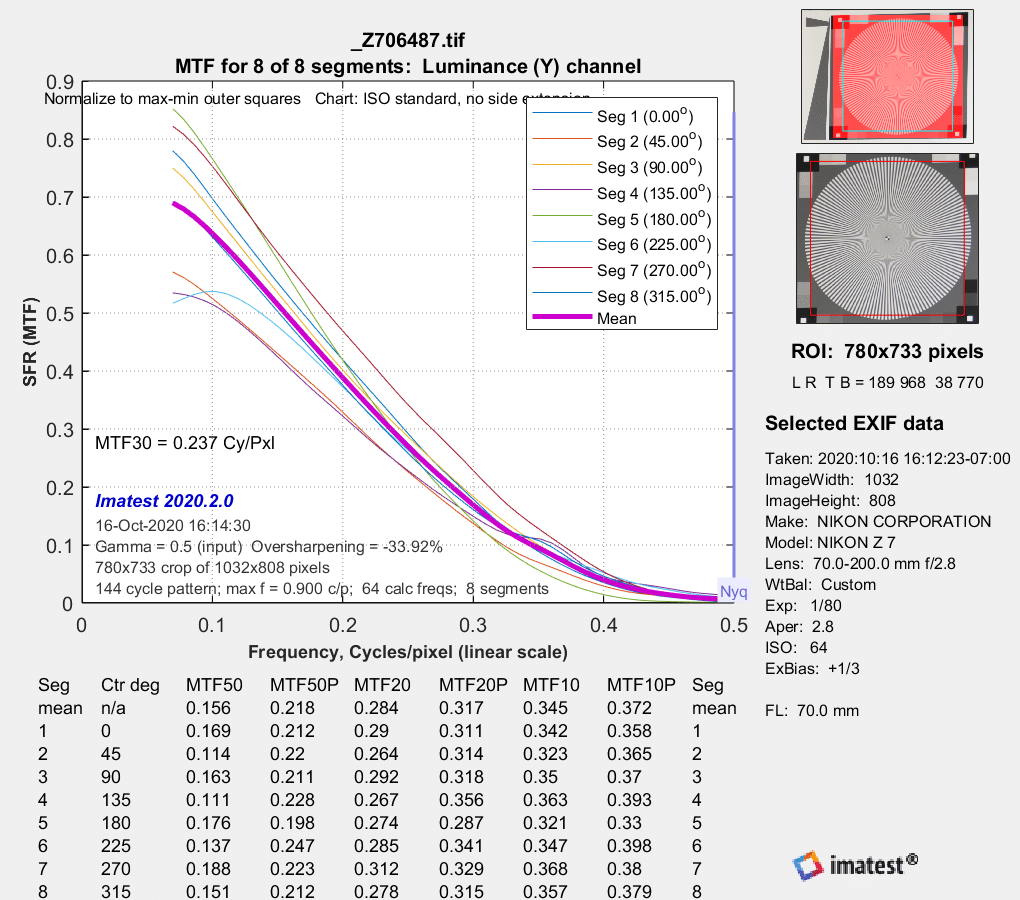
The S lens is sharper. MTF50 mean is .214 cy/px vs .156 cy/px for the E.
A different way of looking at the MTF versus angle follows. These are sometimes called spider graphs. The further the contours are away from the center, the better.
Center:
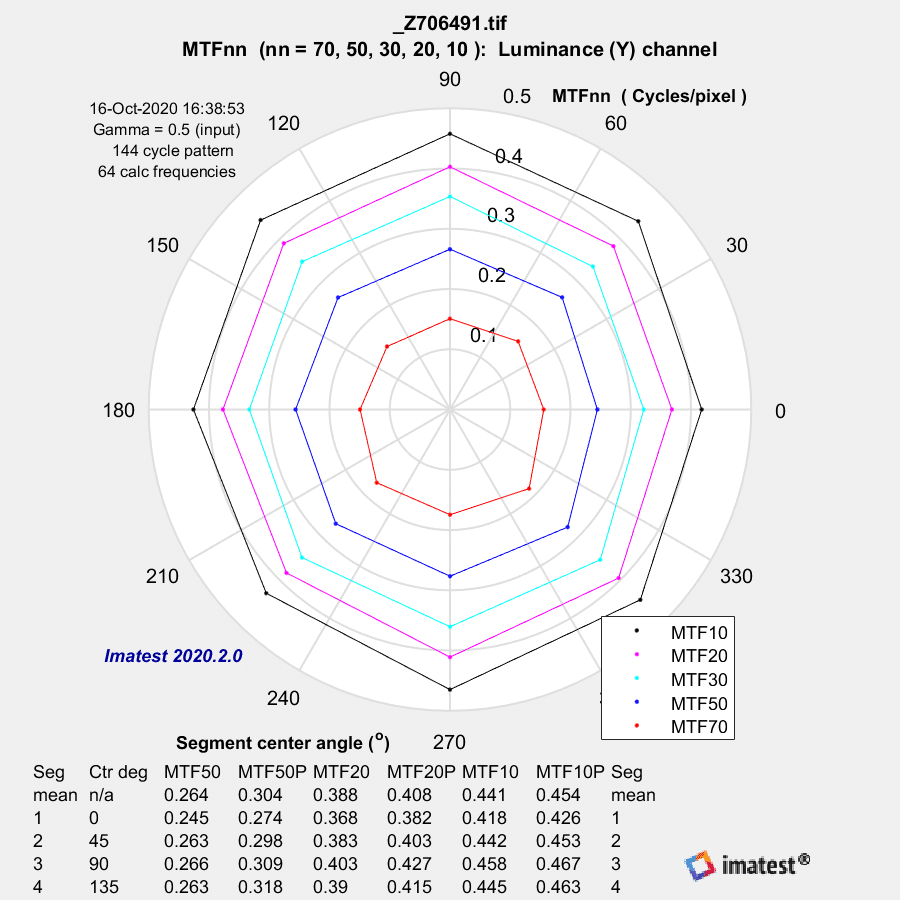
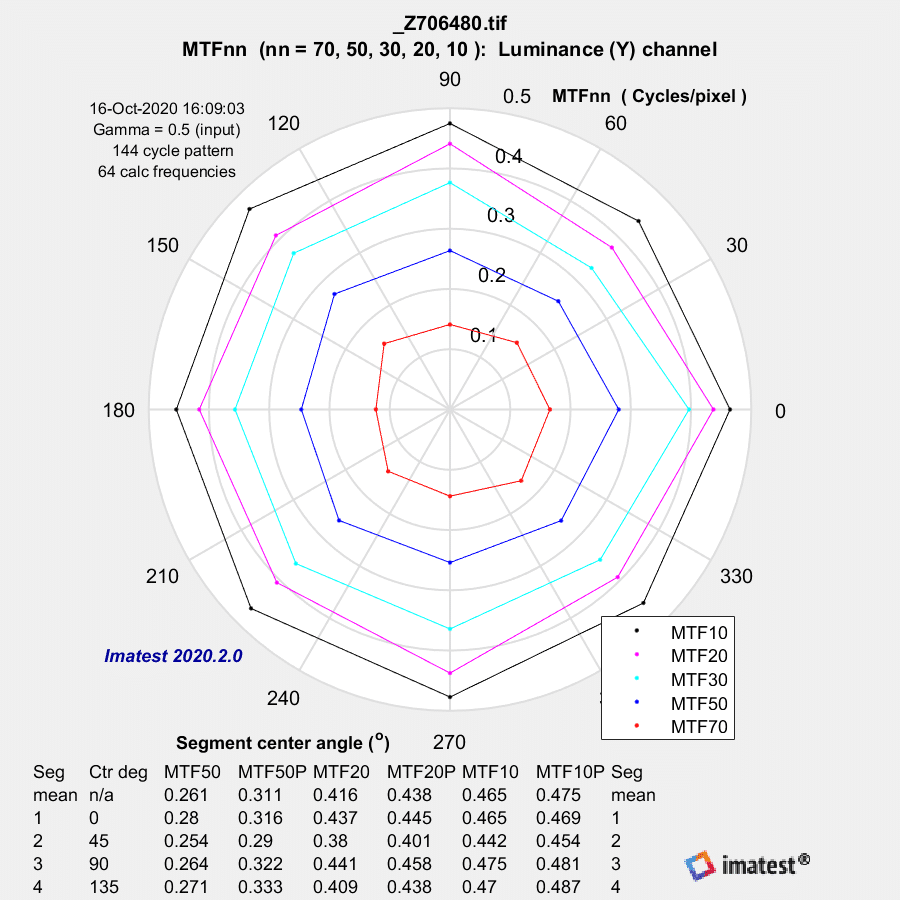
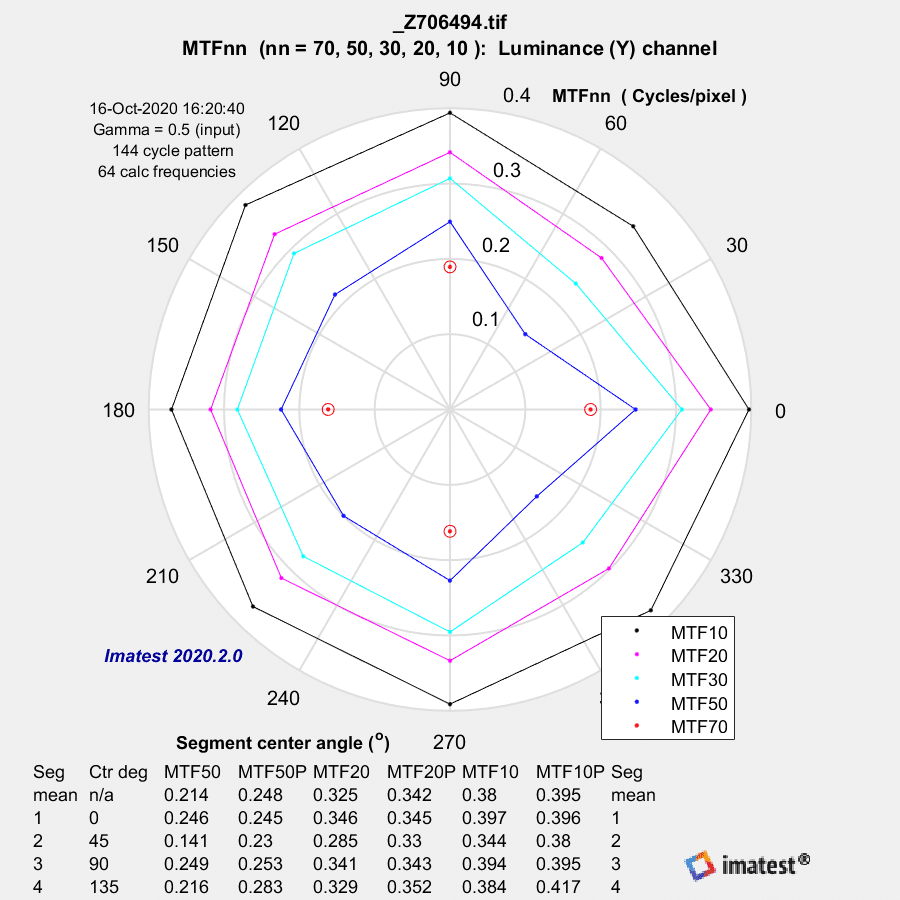
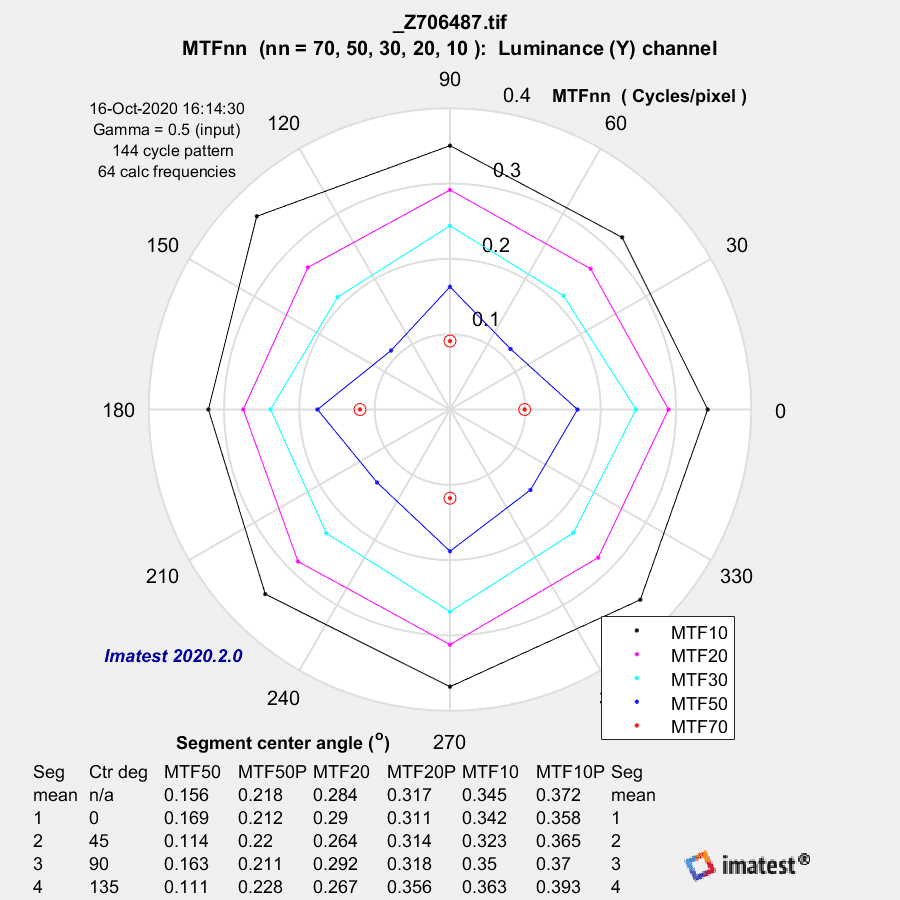
And finally, Shannon capacity:
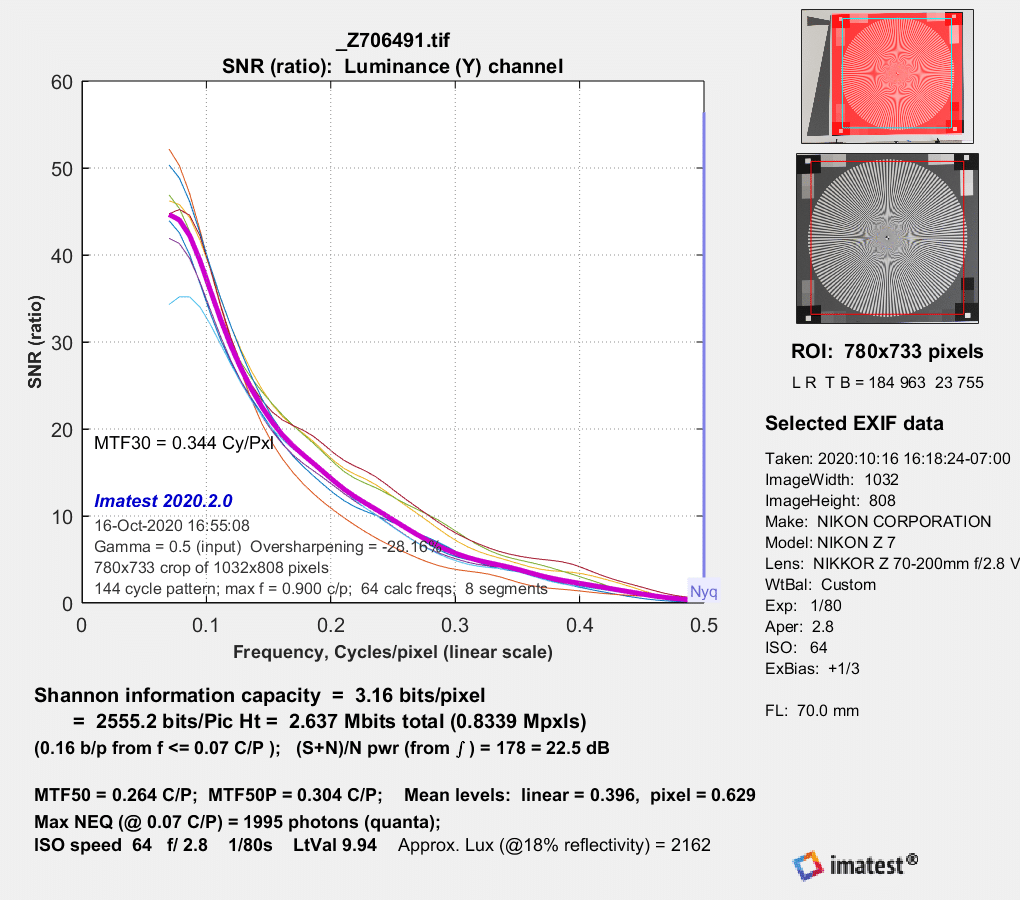
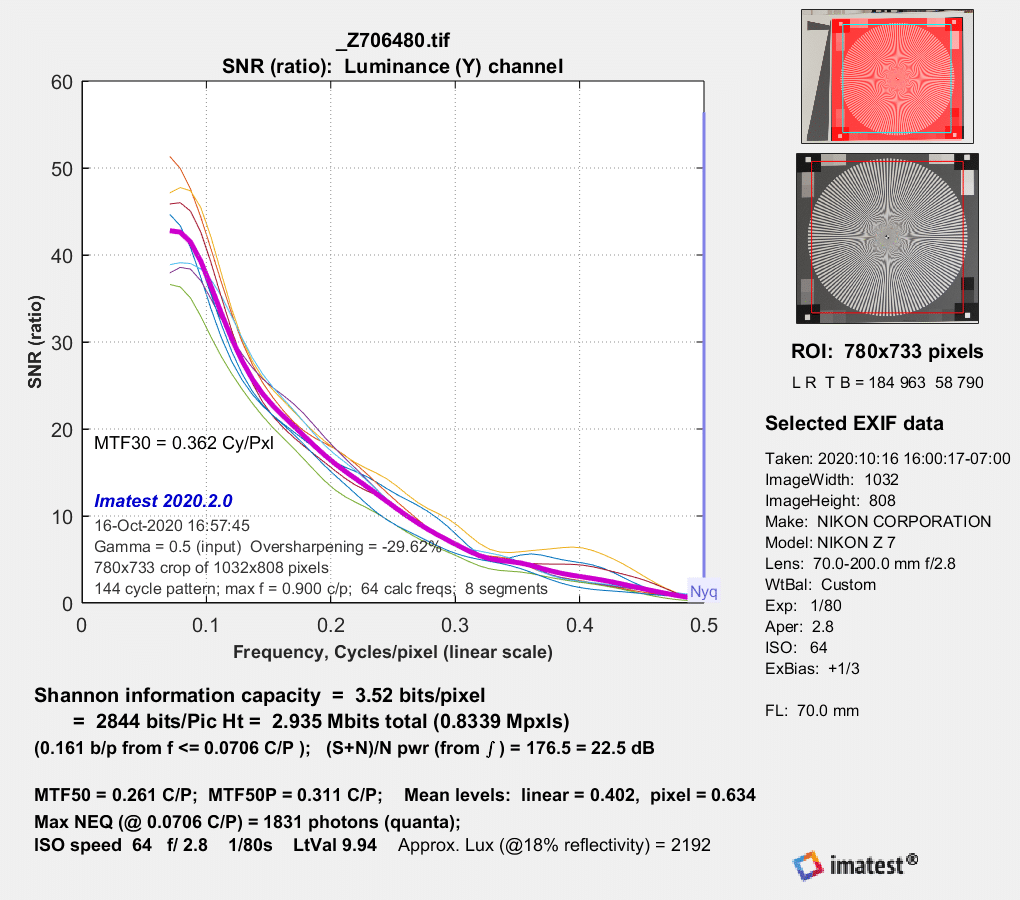
The E lens wins. I’m still trying to figure out the utility of this test.
In the corner:
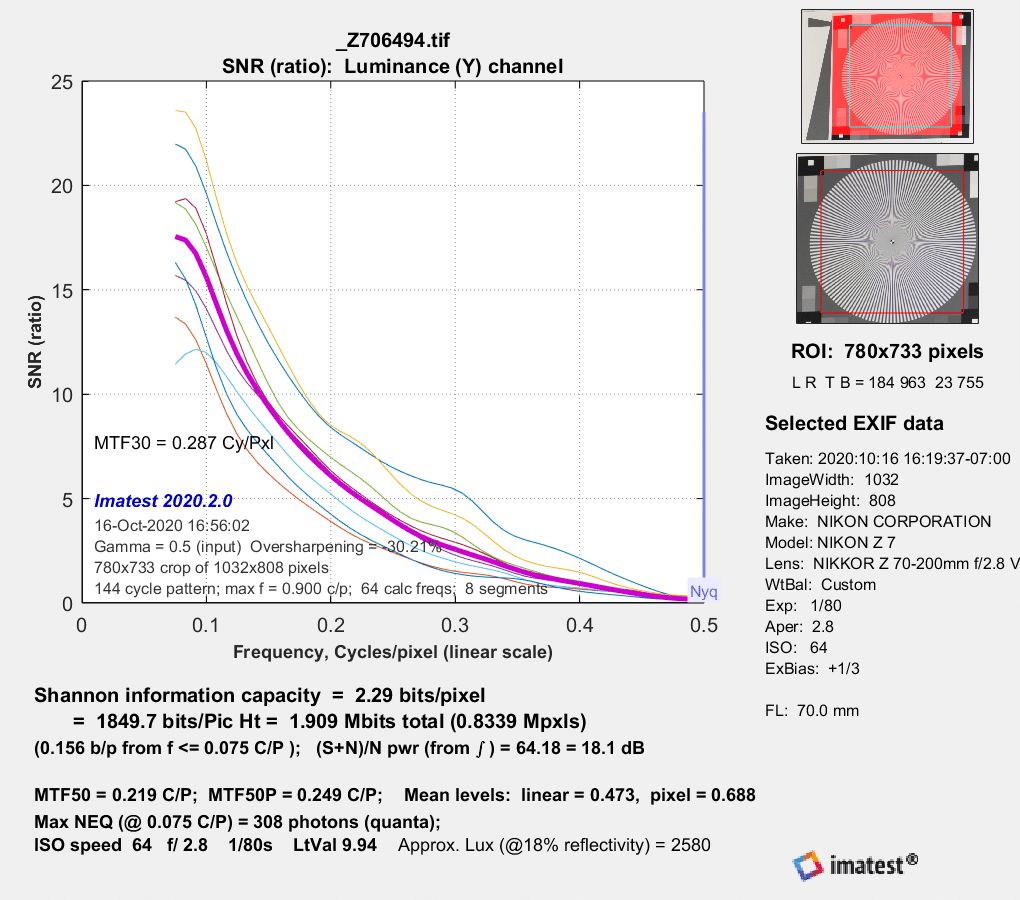
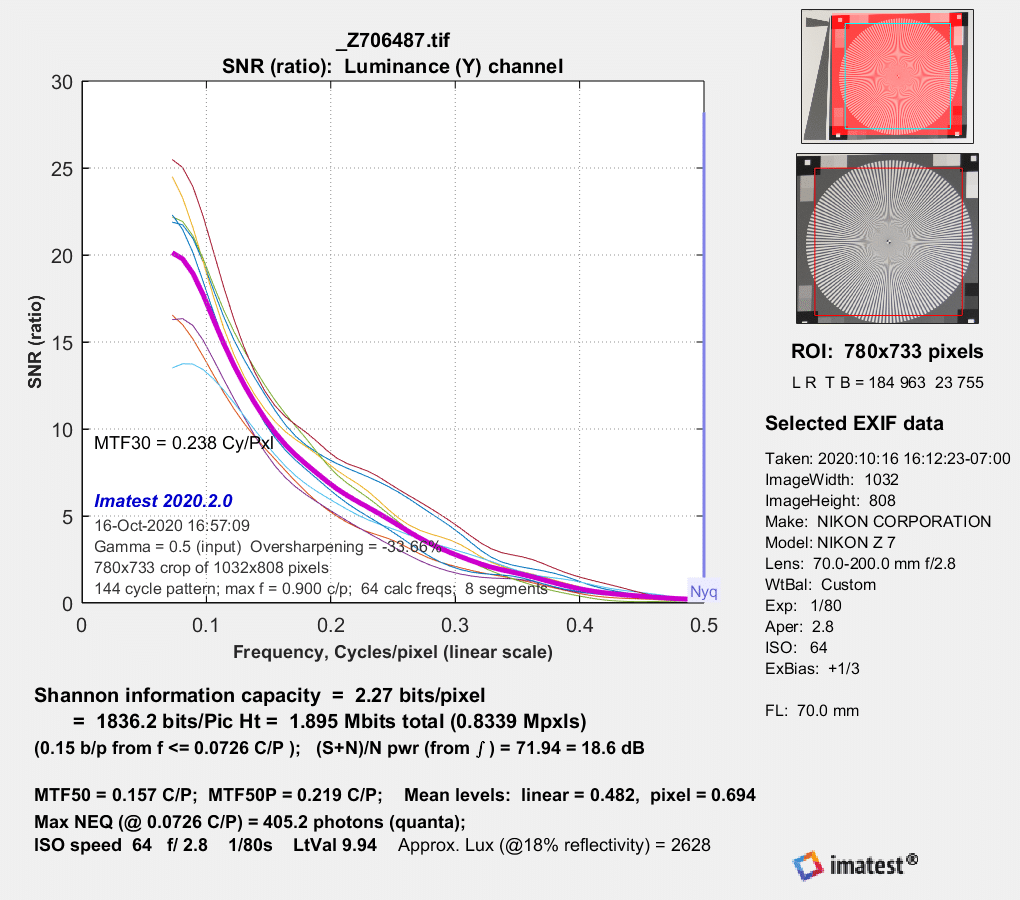
Pretty much a tie.
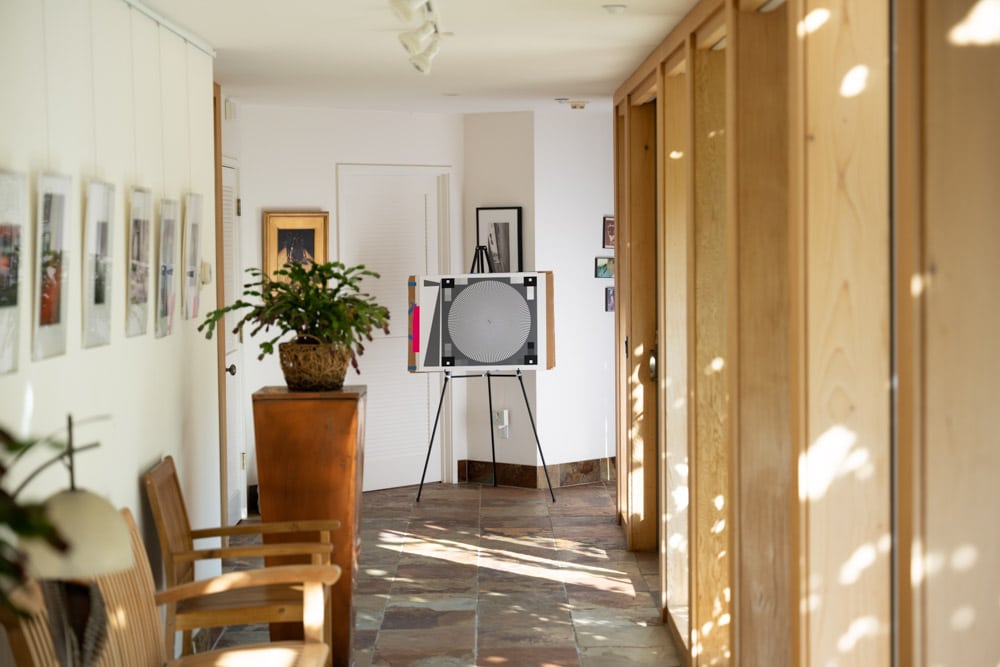
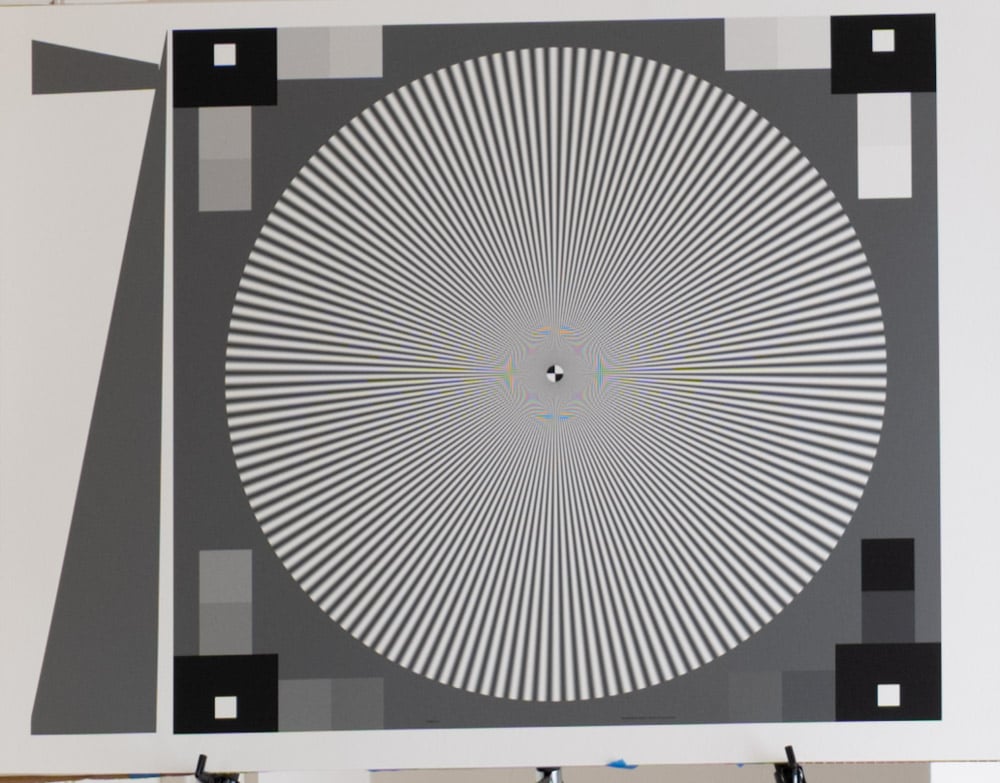
David Berryrieser says
Seems like the utility of the S lens is essentially the same as that of the E lens? Or are the sharpness differences in certain places enough for you to consider using the E lens on the mirrorless bodies?
Also, is there more info on how they are calculating the information capacity per pixel?
JimK says
Not so far.
Here you go:
https://www.imatest.com/docs/shannon/
https://www.imatest.com/wp-content/uploads/2020/03/Information_capacity_white_paper.pdf